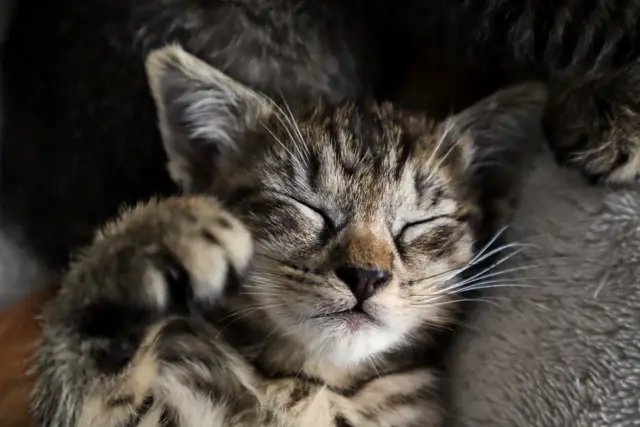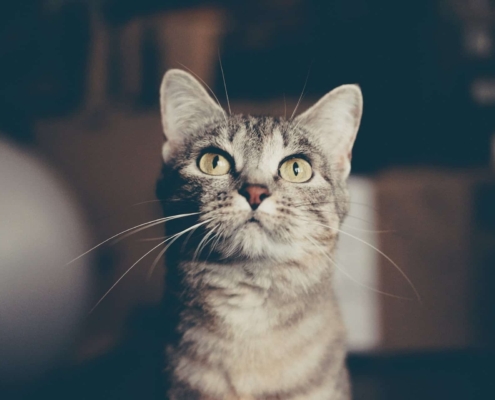
Cats have long captivated the hearts and minds of humans with their mysterious and enigmatic nature. While they may seem aloof at times, cats actually exhibit a wide range of behaviors that are surprisingly similar to those of humans. By understanding these behaviors, we can develop a deeper connection with our feline friends and truly appreciate the fascinating world they inhabit.
The social nature of cats
Contrary to popular belief, cats are not solitary creatures. In fact, they are social animals that form complex relationships with other cats and humans alike. Cats have a strong need for social interaction and companionship, and they rely on their owners for love, attention, and a sense of security. Just like humans, cats crave social bonds and can become lonely or depressed when deprived of social interaction.
Understanding cat body language
One of the most effective ways to communicate with cats is through understanding their body language. Cats use a variety of subtle cues to convey their emotions and intentions. For example, a relaxed and upright tail indicates a content and confident cat, while a puffed-up tail is a sign of fear or agitation. Similarly, a cat’s ear position can reveal a lot about their mood. Forward-facing ears indicate attentiveness, while flattened ears suggest aggression or fear.
Additionally, a cat’s posture and facial expressions can provide valuable insights into their emotional state. A relaxed and open body posture signifies a calm and comfortable cat, whereas a hunched or tense body indicates anxiety or stress. By paying attention to these nonverbal cues, we can better understand our cats and respond to their needs accordingly.
Vocalizations and their meaning
While cats are not as vocal as dogs, they do communicate through a variety of vocalizations. From purring to meowing, each sound has a distinct meaning. Purring is often associated with contentment and relaxation, but it can also be a sign of pain or discomfort. Meowing, on the other hand, is a form of communication that cats primarily use to get their owner’s attention. The pitch, tone, and intensity of a cat’s meow can convey different messages, such as hunger, playfulness, or even annoyance.
It is important to note that each cat has its own unique vocal repertoire, and it may take time to understand what each sound means for your feline companion. By paying close attention to their vocalizations and associating them with the context in which they occur, you can decipher their meaning and strengthen your bond with your cat.
Similarities between cat and human emotions
Cats experience a wide range of emotions that are remarkably similar to those of humans. They can feel happiness, sadness, fear, and even jealousy. Just like humans, cats also experience stress and anxiety, which can manifest in various ways, including decreased appetite, excessive grooming, or aggression. By recognizing and acknowledging these emotions, we can provide our cats with the support and care they need to lead happy and fulfilling lives.
Play and communication in cats
Play is an essential part of a cat’s life, and it serves multiple purposes. Not only does play provide physical exercise and mental stimulation, but it also strengthens the bond between cats and their owners. Through play, cats can communicate their needs, desires, and boundaries. For example, a cat may engage in play biting to establish boundaries and teach their owner about acceptable play behavior.
Understanding the importance of play and providing appropriate outlets for your cat’s energy is crucial for their overall well-being. Interactive toys, scratching posts, and puzzle feeders are just a few examples of enriching activities that can keep your cat engaged and satisfied.
Cat behaviors that mimic human behaviors
It’s fascinating to observe how cats exhibit behaviors that are strikingly similar to those of humans. For instance, cats have been known to exhibit empathy by comforting their owners when they are sad or upset. They may also display possessive behavior, such as guarding their favorite toys or sleeping spots, much like humans protect their prized possessions.
Cats also have a sense of curiosity that rivals our own. They love exploring their surroundings, investigating new objects, and observing their environment. In many ways, cats are like miniature scientists, constantly seeking out new experiences and expanding their knowledge of the world around them.
Why do cats exhibit behaviors similar to humans?
The reasons behind why cats exhibit behaviors similar to humans are not fully understood, but there are several theories that shed light on this intriguing phenomenon. One theory suggests that cats have adapted their behaviors to better communicate with humans, as they have been domesticated for thousands of years. Another theory proposes that cats have evolved to mimic human behaviors as a means of survival, as it allows them to establish a stronger bond with their owners and receive better care.
Regardless of the underlying reasons, the fact remains that cats possess a remarkable ability to understand and mirror human behaviors. By acknowledging and appreciating these similarities, we can forge deeper connections with our feline companions and provide them with the love and care they deserve.
How to strengthen the bond with your cat through understanding their behaviors
Understanding cat behaviors similar to humans is key to strengthening the bond with your furry friend. By observing their body language, vocalizations, and play preferences, you can gain valuable insights into their needs and desires. Additionally, spending quality time with your cat through interactive play sessions, grooming, and cuddling can further deepen your connection.
It’s important to remember that each cat is unique, and what works for one may not work for another. Patience and open-mindedness are crucial when building a strong bond with your cat. By listening to their cues, respecting their boundaries, and providing a safe and nurturing environment, you can create a loving and trusting relationship that will last a lifetime.
Conclusion
Cats are truly remarkable creatures that share many behaviors with humans. From their social nature and body language to their vocalizations and emotions, cats exhibit a fascinating array of behaviors that mirror our own. By taking the time to understand and appreciate these similarities, we can forge deeper connections with our feline companions and provide them with the love and care they deserve. So, next time you interact with your cat, take a moment to observe and appreciate the incredible world of cat behaviors similar to humans.
If you enjoyed my article, I would appreciate you sharing it with your network.

Sima Ndlebe
Sima writes for CatBuzz. He is interested in Cats, Health and Fitness, and Entrepreneurship.
Published: 30 October 2023



